But… what’s a mola?
The mola forms part of the traditional costume of a Guna (indigenous people of Panama) woman. Two mola panels make front and back panels in a blouse.
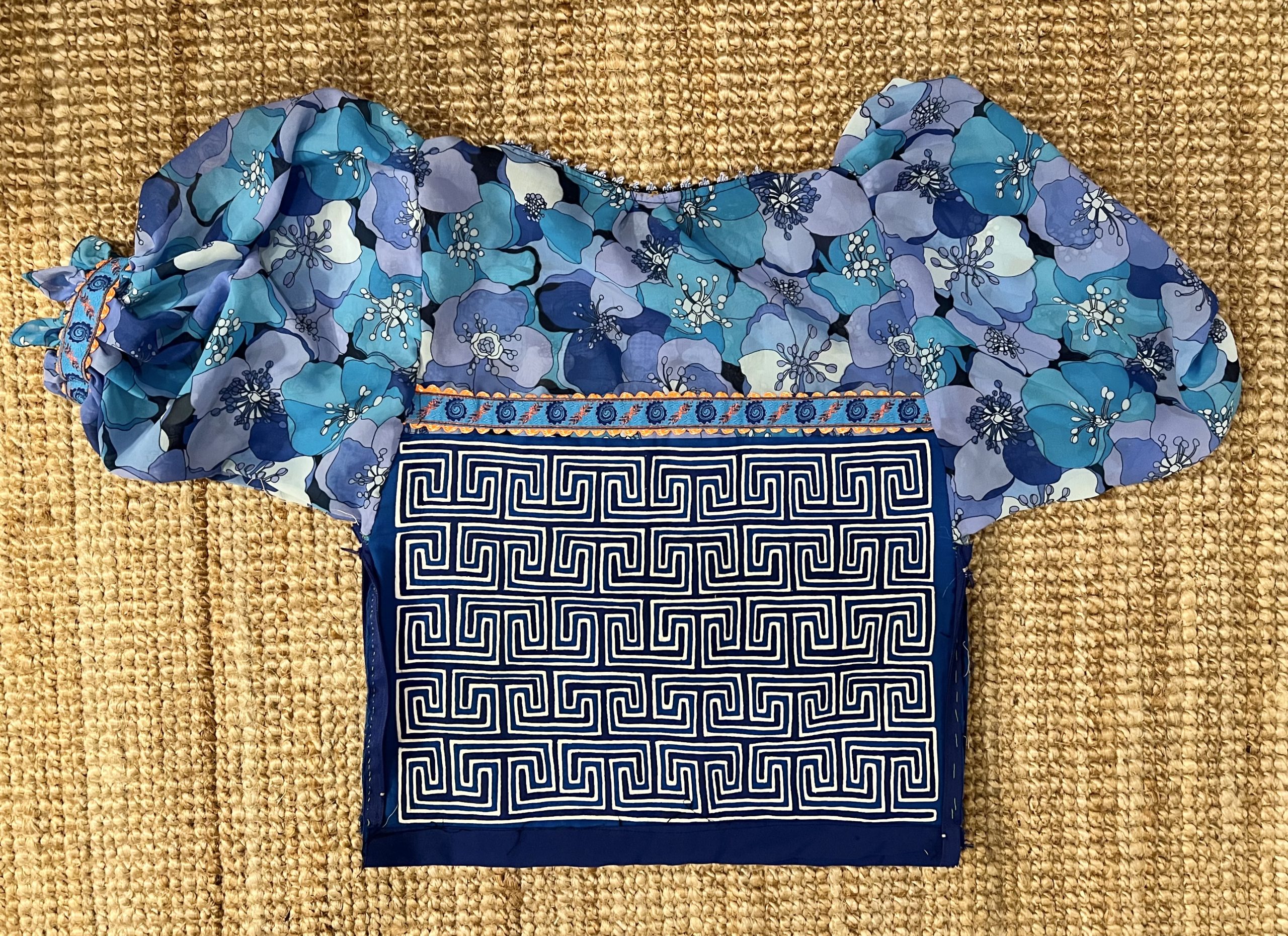
In the Guna native language, “mola” means “shirt” or “clothing.” The mola originated with the tradition of Guna women painting their bodies with geometrical designs using available natural colors; in later years these same designs were woven in cotton, and later still, sewn using cloth bought from European settlers in Panama.
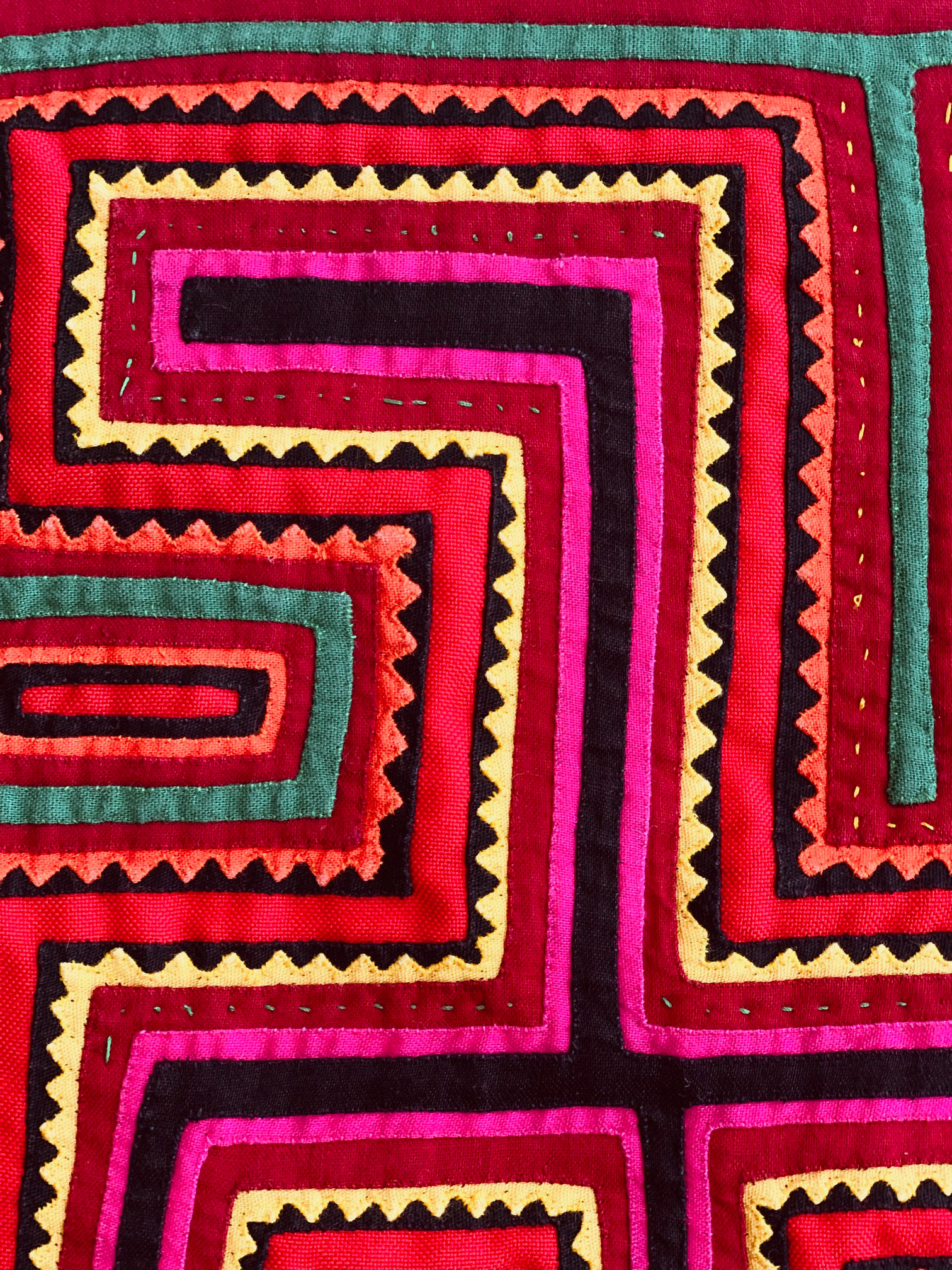
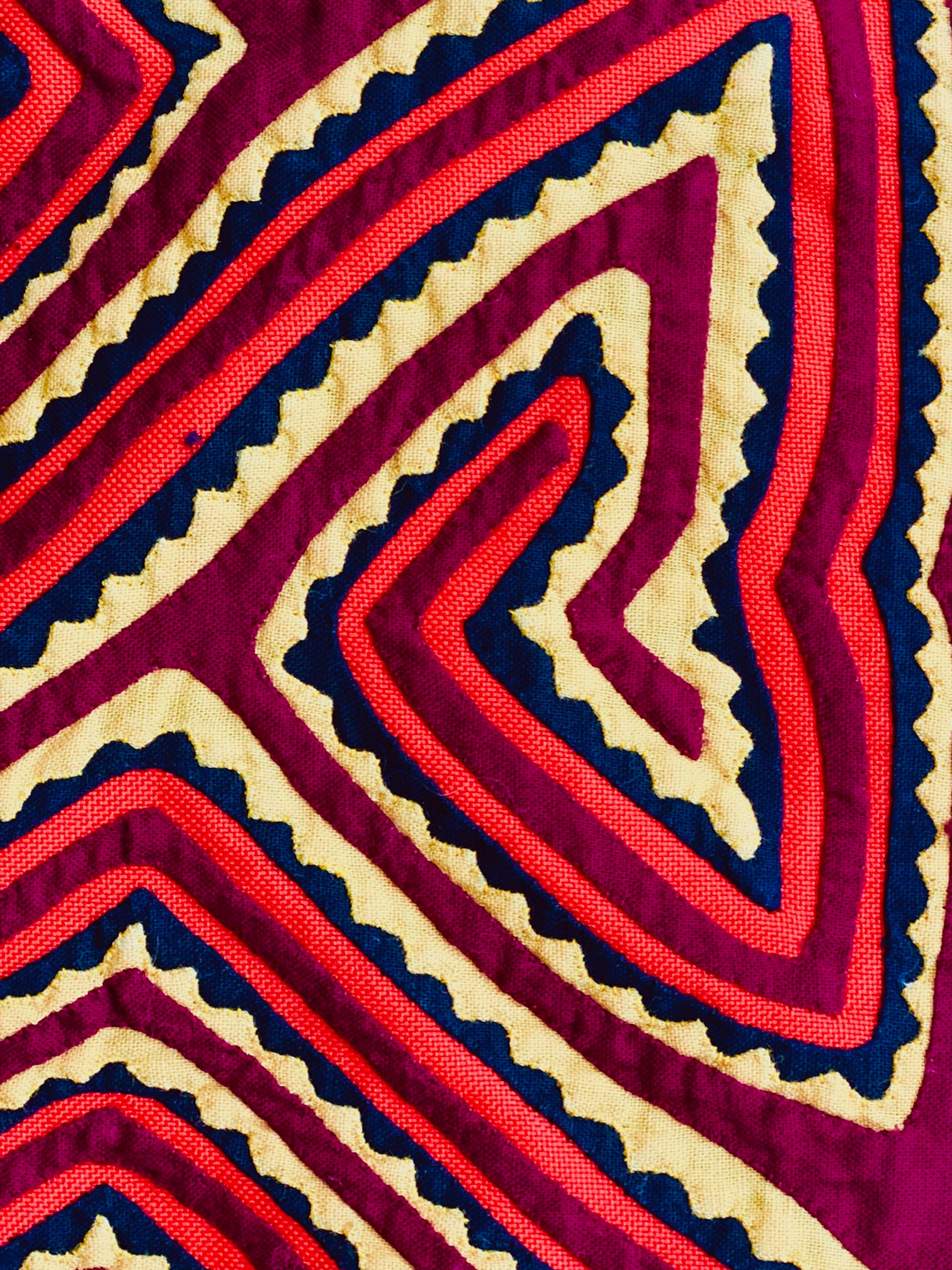
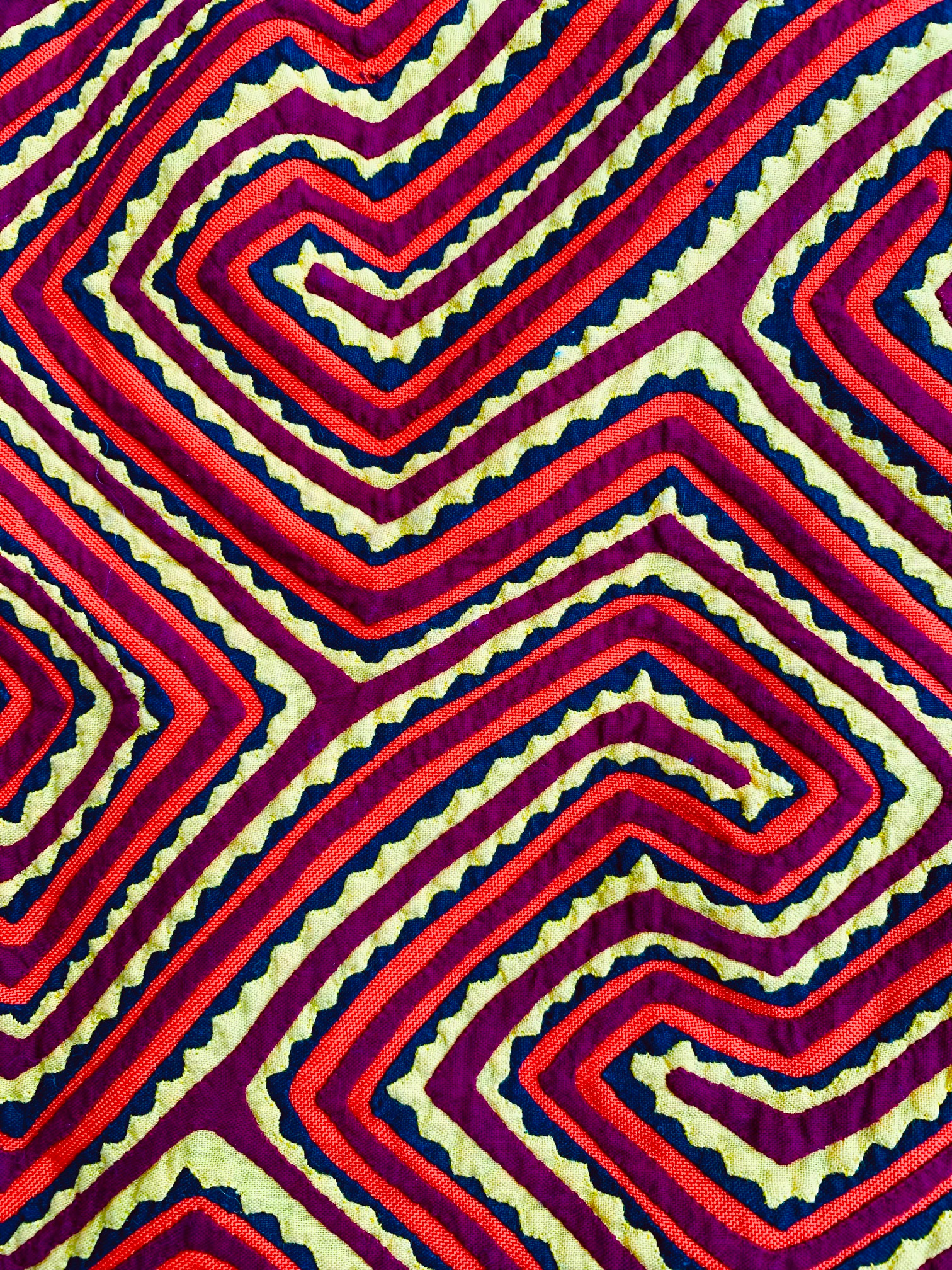
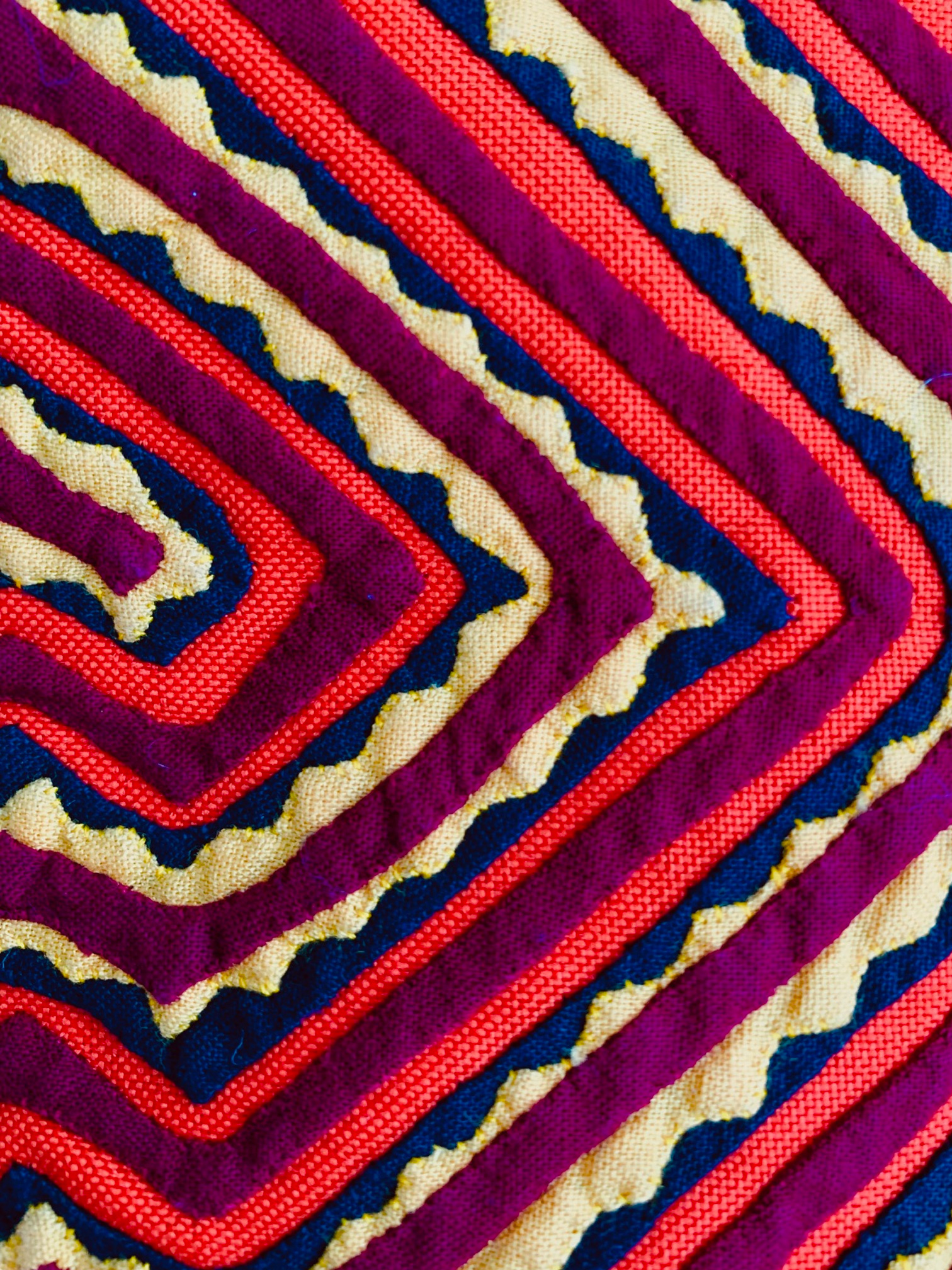
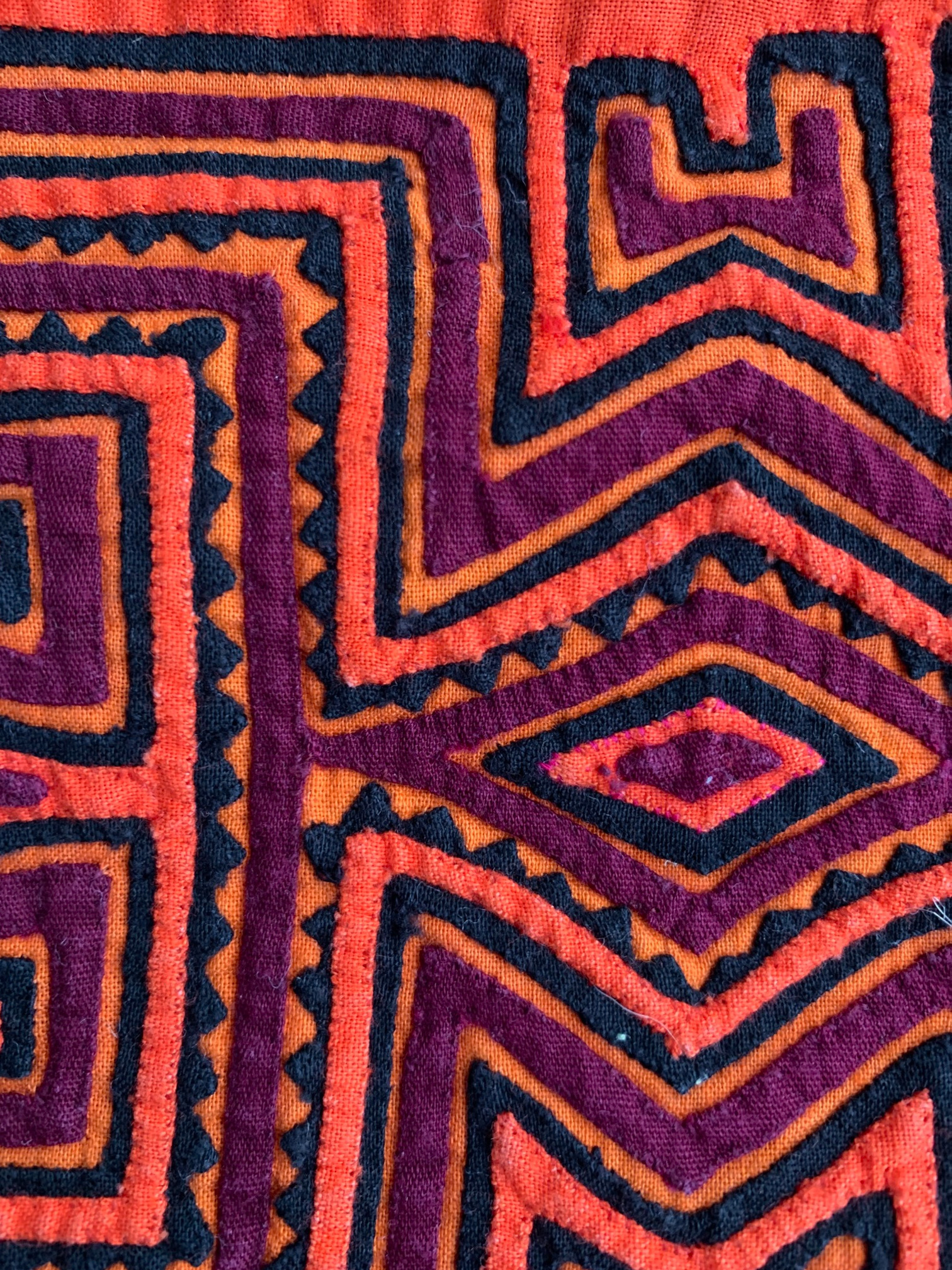
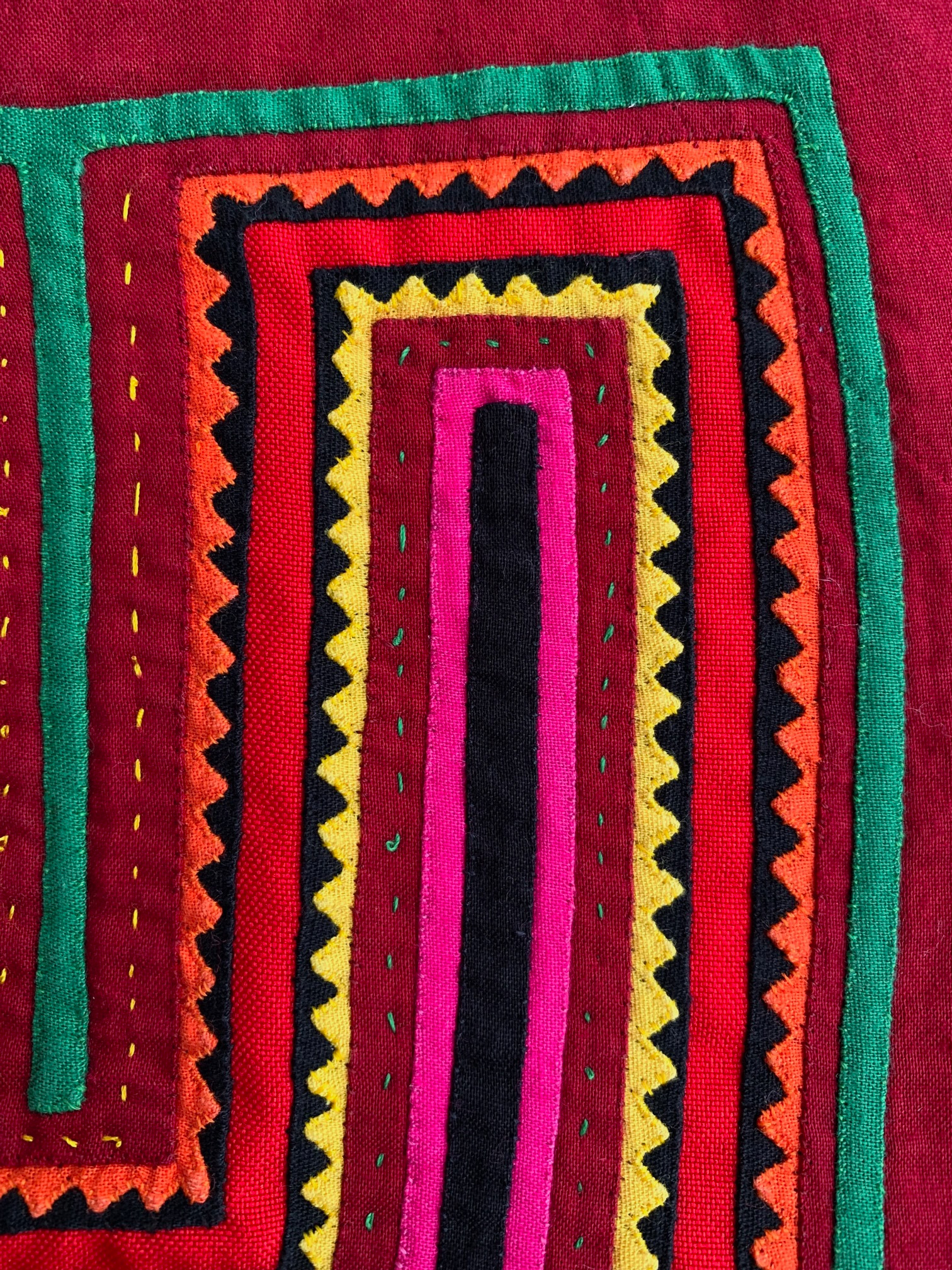
Molas are handmade using the reverse appliqué technique. Several layers (usually two to seven) of different-colored cloths (usually cotton) are sewn together; the design is then formed by cutting away parts of each layer. The edges of the layers are then turned under and sewn down. Often, the stitches are nearly invisible. This is achieved by using a thread the same color as the layer being sewn, blind stitches, and tiny stitches. The finest molas have extremely fine stitching, made using tiny needles.
